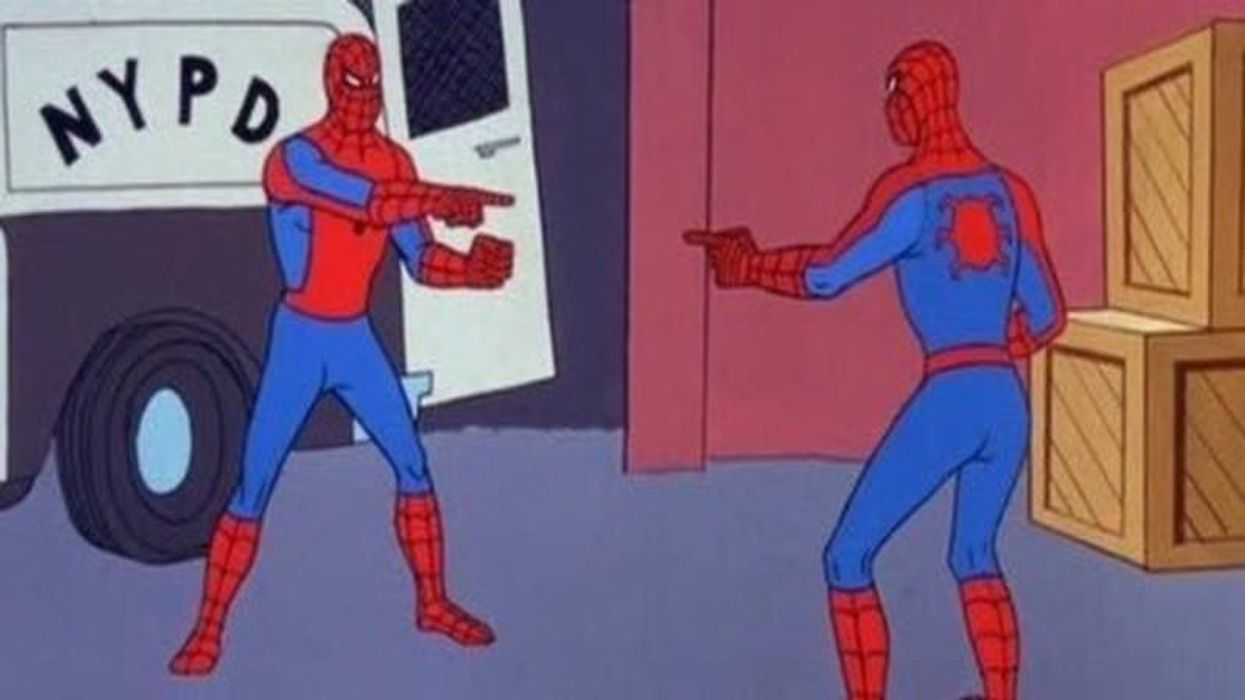The Twin Films Phenomenon and Why Hollywood Has You Seeing Double
Ever seen two trailers for two movies with the same idea? Here’s why.

It happens all the time. You’re flipping through channels and you land on the trailer for a movie. It’s got explosions. It’s got Jamie Foxx. It’s got… the same plot as a movie that came out 3 months ago? WTF?
A new video from Cheddar has dubbed this phenomenon “Twin Films.” The video looks at some notable Twin Films and asks, “how could this have happened?” Watch it below and see for yourself:
The video talks about quite a few Twin Films, but it doesn’t go as in-depth as its title implies. So let’s pick up where they left off and break down what’s really going on behind the scenes with Twin Films.
OMG, Twinsies
One of the Twin Films scenarios that the video talks about is White House Down vs. Olympus Has Fallen. The implication is that since both movies were released around the same time, their development history is largely similar. Not so fast...
Because that’s not really what happened in this case.
White House Down was a spec script that sold to Sony as a package with Roland Emmerich already attached. The budget was $150m+ and the production values were kind of insane -- they actually built a replica of the White House. I remember reading the script with a buddy and being super excited because James Vanderbilt’s draft was awesome.
On the other hand, Olympus Has Fallen wasn’t part of the studio system at all. It was produced by independent film production company Millennium Films, which was behind The Expendables franchise (and unfortunately, the new Hellboy reboot).
I work in the independent film space, and I can tell you that a $150m budget is out of the question for 99% of films. This one was priced at around $70m, and even that’s a lot for an indie.
The reason both of these movies came out around the same time is that both parties thought they had the better project. Millennium figured they had set themselves up with a smart business model backed by international presales; Sony thought they’d bought the better script with a more bankable director and star. It wasn’t until the films were released that audiences decided which one they liked better.
Hey, That’s Mine!
One thing the video alludes to is the appearance of plagiarism. Sorry to rain on Cheddar’s parade, but that’s not a thing here. Plagiarism, or copyright infringement, involves the theft of the expression of an idea that belongs to somebody else.
There are two things you can’t steal: an idea itself, and work that is in the public domain.
The video cites Mirror, Mirror (produced by now-defunct Relativity) and Snow White and the Huntsman (Universal) as examples of Twin Films. But wait a minute -- doesn’t Snow White and the Seven Dwarves belong to Disney?
Yep.
Disney’s Snow White, however, is based on a story by the Brothers Grimm, and that story is in the public domain, which means nobody owns it. As long as Universal and Relativity based their versions on the Brothers Grimm story and not on Disney’s animated classic... they were in the clear.
And yes, this totally means you can develop and pitch a Snow White story based on the Brothers Grimm story. This is why every few years someone makes a Robin Hood movie. It's in the public domain.
Behind The Scenes
There are a couple of reasons rival studios don’t back down from competing releases. Once a film is in production, that money is a sunk cost and they need to recoup as much of it as possible. It’s also important to try to stake out the intellectual property for a potential franchise. As you can see, Twin Films rarely become Twin Hits.
One of the things this video leaves out about the two Jungle Book films is that Disney’s got a wide theatrical release, while Warner Brothers actually sold its version to Netflix for hundreds of millions of dollars. WB lucked out in being able to recoup their investment in the budget, while Netflix got a studio-quality film.
Wrapping Up
Hopefully, this sheds some light on the hidden story behind Twin Films. As with anything in Hollywood, there’s a lot more than meets the eye.
Can you think of any Twin Films coming out soon? Let us know in the comments below.











